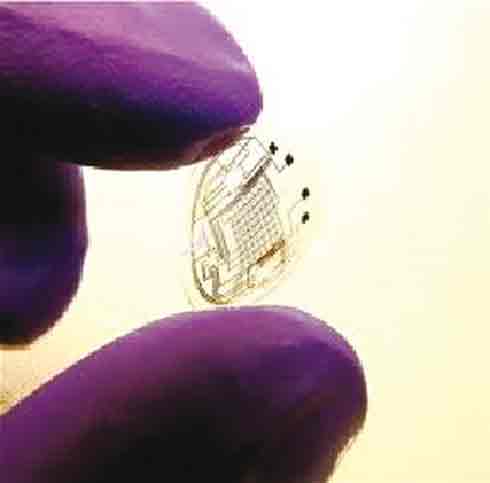An electronic device which transforms light impulses from
the environment in signals captured by our brain and interpreting
them into images: various research projects focusing on artificial retinas
are now being carried out around the world, turning into reality what not
so long ago seemed like only a dream.
The first results introduced
relate to a vision that is still basic (light perception, shadows, dark
outlines) but they nevertheless seem to be encouraging for the
future.
In Italy, Bologna is one of the active centres where this type
of research takes place: one such research focuses on creating a contact
lens in which is inserted a printed circuit able to perceive light,
passing it on to a microchip transplanted in occipital regions via
wireless. This project carried out by Duilio Siravo at the Second
University of Naples is done in collaboration with the University of
Bologna.
"The contact lens", explains Sergio Zaccaria Scalinci at the
University of Bologna, "was applied on the eyes of guinea pigs, rabbits in
this case, where was evidenced the ability to recuperate various pixels,
observed by the user in terms

Results are obtained by submitting guinea pigs to
behavioural testing.
The electronic circuits inserted in the contact
lenses are made of a nanolayer-based metal, as small as one thousandth of
a diameter of a human hair, and mounted on a flexible organic layer in
order to be easily placed in the eye.